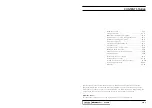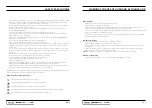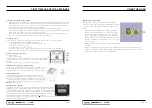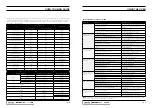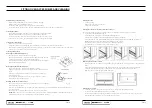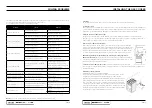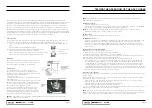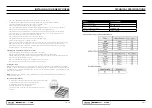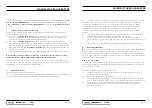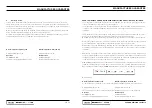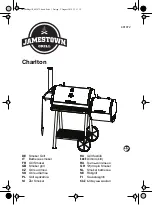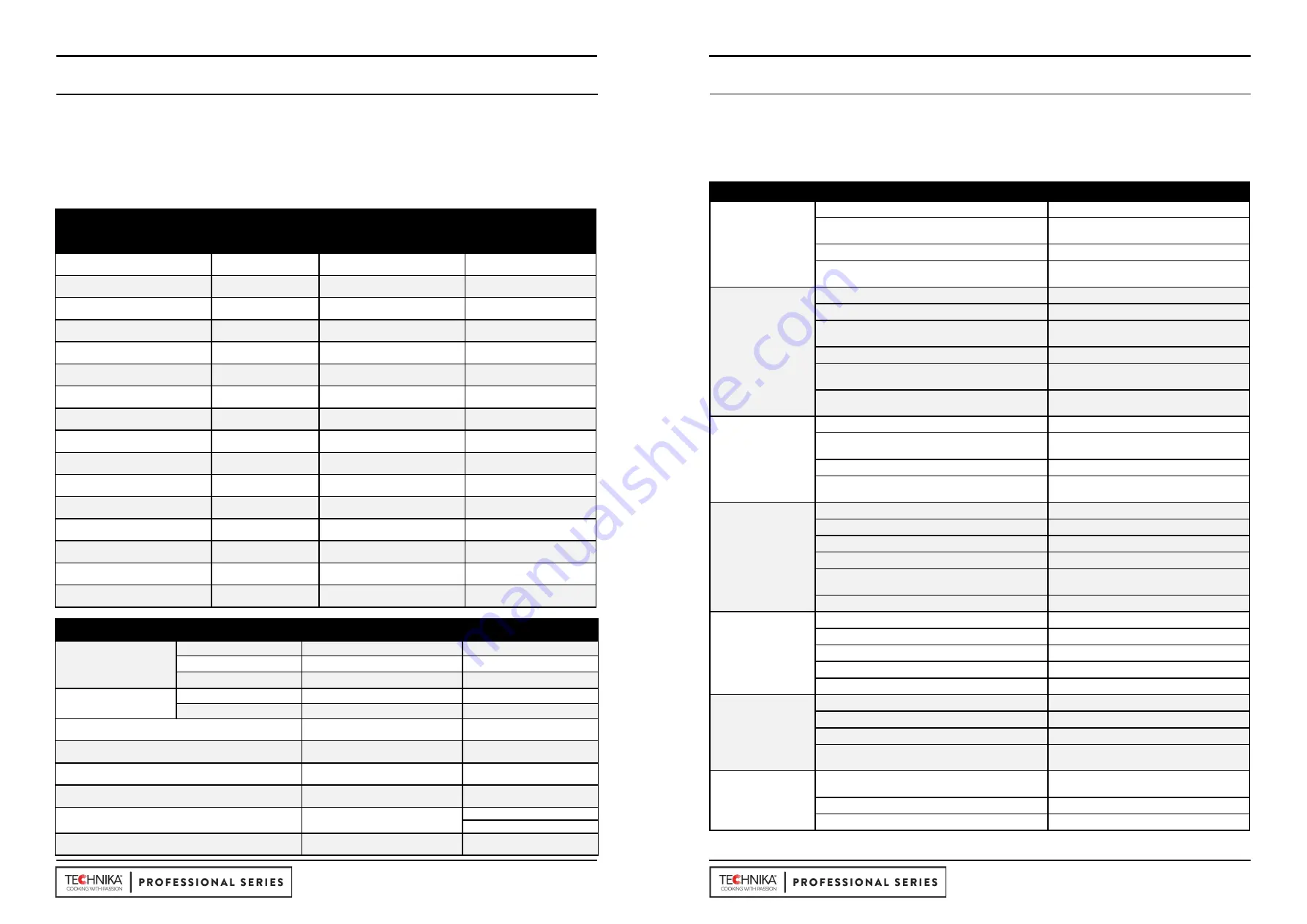
PG 10
PG 11
OVEN COOKING GUIDE
USING THE OVEN
UNDERSTANDING COOKING PROBLEMS
The following is intended as a guide only. It is often required to set oven 10-20 degrees above or below this guide
to get the result you want. Also adjustments are needed for the cooking time to suit personal desired results. Also
you should follow the recipe guide when setting temperature and times. For best results when baking, preheat
your oven f or 15-20 minutes.
Problem
Causes
What to do
Uneven cooking
Incorrect shelf position
Select shelf that puts food in centre of oven
Oven tray too large
Remove oven tray. Use smaller trays or
dishes
Trays not in centre
Put trays in centre
Oven fan causing uneven browning or small cakes
to lean over
Rotate food during cooking, or use
Conventional Mode (i.e. no fan)
Baking products too
brown on top
Oven not preheated
Preheat the oven
Baking tins too large (diameter) for recipe
Use correct size tins
Fan-forced mode with oven temperature too high
Check recipe. Reduce oven temperature by
10-29 or more
Cooking time too long
Next time, shorten cooking
Baking tins not evenly spaced
Stagger baking tins at least 3cm between
tins and the oven walls
Items to be cooked are not evenly sized or spaced
in trays
Make into same size and shape and spread
evenly over trays
Baking products too
brown on bottom
Baking tins too large
Use correct size tins
Baking tins are dark metal or glass
Change to shiny, light tins or lower the
temperature by 10-20 degrees
Food to low in oven
Cook one shelf higher
Oven door opened too frequently during baking
Don’t open the oven door until at least half
the ooking time has passed
Cakes have a cracked
thick crust
Baking temperature too high
Lower the temperature
Oven tray blocking heat (below themostat)
Use higher shelf position for oven tray
Baking temperature too high
Lower the temperature
Food too low in oven
Cook one shelf higher
Cake batter over mixed
Mix just long enough to combine the
ingredients
Baking tin too deep or wrong size
Check size of tin and use recommended size
Bked products are
pale, flat and under
cooked
Baking tins dark
Change to shiny light tins
Baking temperature too low
Raise the temperature
Food too low in oven
Cook one shelf higher
Baking time too short
Increase cooking time
Incorrect baking tin size
Use correct sie tin
Cakes fallen in centre
Baking temperature too low
Raise the temperature
Baking time too short
Increase cooking time
Proportions of ingredients incorrect for recipe
Check recipe
Opening door too early during baking
Do not open door until the last quarter of
cooking time
Roast meat and
potatoes not browning
in fan oven
Poor hot air circulation
Elevate food onto a rack to allow air
circulations
Oven temperature is too low
Increase temperature to 200-22-
Not long enough in oven
Continue cooking for another 15+ minutes
NOTE:
Condensation on oven door is normal, especially when kitchen is cold. Also spacing and size of food on trays and the
number of baking dishes in the oven can affect air circulation.
Food
Fan assisted oven
Time in minutes
Temperature
Oven shelf position
Plain or full scones
210
Any
10-15
Rolled biscuits
150 (170)
Any
10-15
Spooned biscuits
190
Any
12-15
Shortbread biscuits
150
Any
30-35
Hard individuals meringues
100
Any
90
Soft individual meringues
165
Any
15-20
Pavlova
100
Any
75
Patty cakes
180
Any
15-20
Sponge
170
Any
20-30
Plain butter cake
170
Any
25-40
Rich fruit cake
130
Any
180
Shortcrust cornish pastry
160 (190
Any
40-45 (10/35)
Shortcrust custard tart
170-200
Any
20-30 (10/25)
Cream puffs
200
Any
25-30
Yeast bread
200
Any
25-30
Pizza
220
Any
15-25
Meat/ Poultry/Fish
Recommended Temperature
Minutes per kilogram
Beef
Rare
200
35-40
Medium
200
45-50
Well done
200
55-60
Lamb
Medium
200
40
Well done
60
Veal
180
60
Pork
200
60
Chicken
180-200
45-60
Duck
180-200
60-70
Turkey
180
40-45 (less than 10kg)
35-40 (more than 10kg)
Fish
180
20


